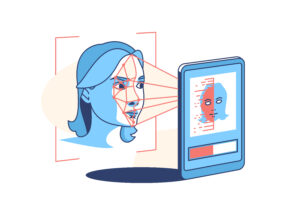OCR or optical character recognition—has been a game changer in the transportation and logistics industry. It has allowed businesses to streamline their processes, reduce paper usage, and exchange information quickly and accurately. In this blog post, we will explore OCR in detail, including how it is used in transportation and logistics. We will look at its various applications and benefits, as well as some challenges that may arise when using OCR technology. By the end of this article, you will have a better understanding of how OCR can be used to optimize your business’ operations.
The Benefits of OCR in Transportation and Logistics
In recent years, the transportation and logistics industry has been under immense pressure to cut costs and improve efficiency. One way that companies have been able to meet these challenges is by using Optical Character Recognition (OCR) technology. OCR can be used in a variety of ways in the transportation and logistics sector, including automating paperwork, tracking shipments, and managing inventory.
The benefits of using OCR in transportation and logistics are numerous. Perhaps the most important benefit is that it can help to speed up and automate many processes that are currently manual and time-consuming. For example, OCR can be used to automatically scan and process documents such as invoices, packing lists, and shipping manifests. This can save a significant amount of time for companies who process large volumes of paperwork on a daily basis.
In addition to saving time, OCR can also help to reduce errors and increase accuracy in data entry. When documents are manually entered into databases or spreadsheets, there is always the potential for mistakes to be made. However, with OCR technology, all of the data from a document can be quickly and accurately extracted without any room for error.
Another great benefit of using OCR in transportation and logistics is that it can help you track your shipments in real-time. By scanning barcodes or RFID tags on shipping containers, you can instantly see where your products are located at any given moment. This information can be extremely valuable when trying to optimize supply chain
The Different Types of OCR Systems
There are three main types of OCR system: optical character recognition, intelligent character recognition, and intelligent word recognition.
1. Optical Character Recognition (OCR)
Optical character recognition is a technology that enables the conversion of scanned images of text into machine-readable text. OCR systems can be used to read text from documents such as invoices, bills, and ID cards.
2. Intelligent Character Recognition (ICR)
Intelligent character recognition is a more advanced form of OCR that uses artificial intelligence to recognize characters from images. ICR systems can be used to read text from documents such as handwritten notes and forms.
3. Intelligent Word Recognition (IWR)
Intelligent word recognition is the most advanced form of OCR that uses artificial intelligence to recognize words from images. IWR systems can be used to read text from documents such as books and articles.
How to Implement OCR in Your Business
There are many ways to implement OCR in your business. The best way to start is by first understanding what OCR is and how it can be used to improve your business. Once you have a clear understanding of OCR, you can then begin to implement it into your business processes.
One of the most common ways that businesses use OCR is by using it to automate data entry. This can be done by using an OCR software to read images of documents and then convert them into text data that can be stored in a database. This can save a lot of time and money for businesses that have a lot of paper documents that need to be entered into a database.
Another way that businesses use OCR is by using it to scan documents and extract specific information from them. This can be useful for extracting data from invoices, receipts, or any other type of document. By extracting this data, businesses can save time and money by not having to manually enter this data into their system.
If you are looking to implement OCR in your business, there are many resources available online that can help you get started. There are also many different types of software available that can help you automate different aspects of your business processes.
Conclusion
OCR technology in transportation and logistics has made a significant impact on the way goods are delivered and tracked. From improving package management to optimizing delivery routes, OCR technology can be used to improve efficiency, reduce costs, and save time. Additionally, advanced facial recognition systems have been developed for use in airports to speed up security checks and passenger identification processes. We believe that these developments will further streamline the transportation industry and make it easier for companies to manage their operations more effectively.






